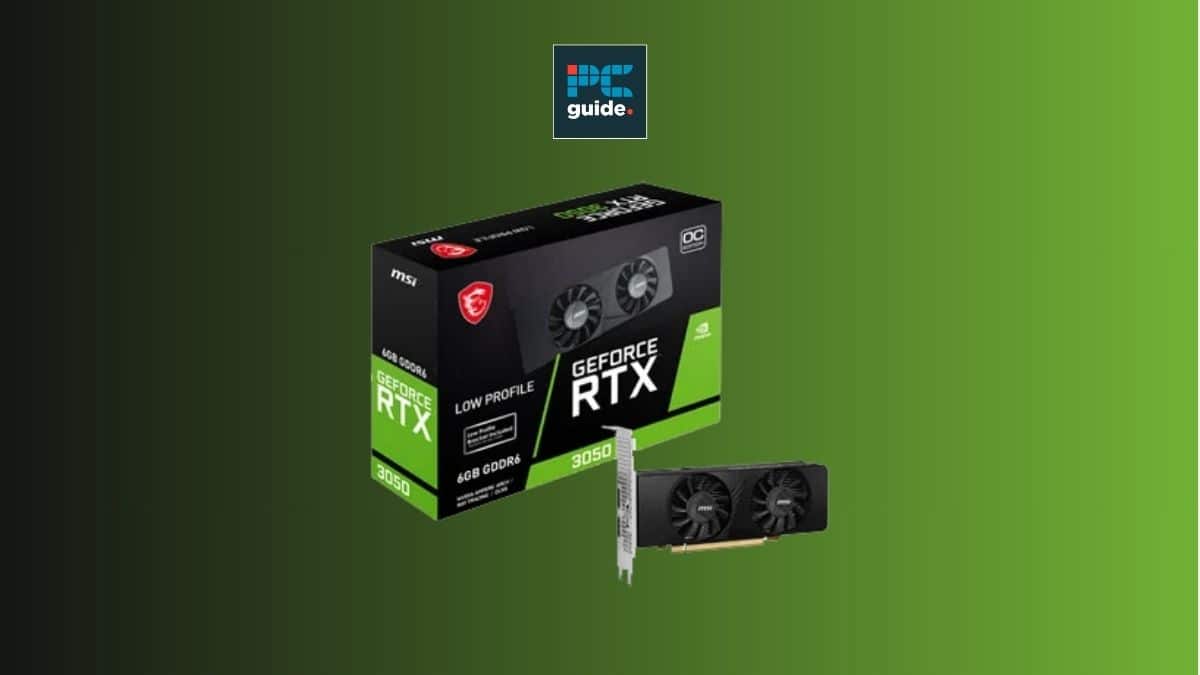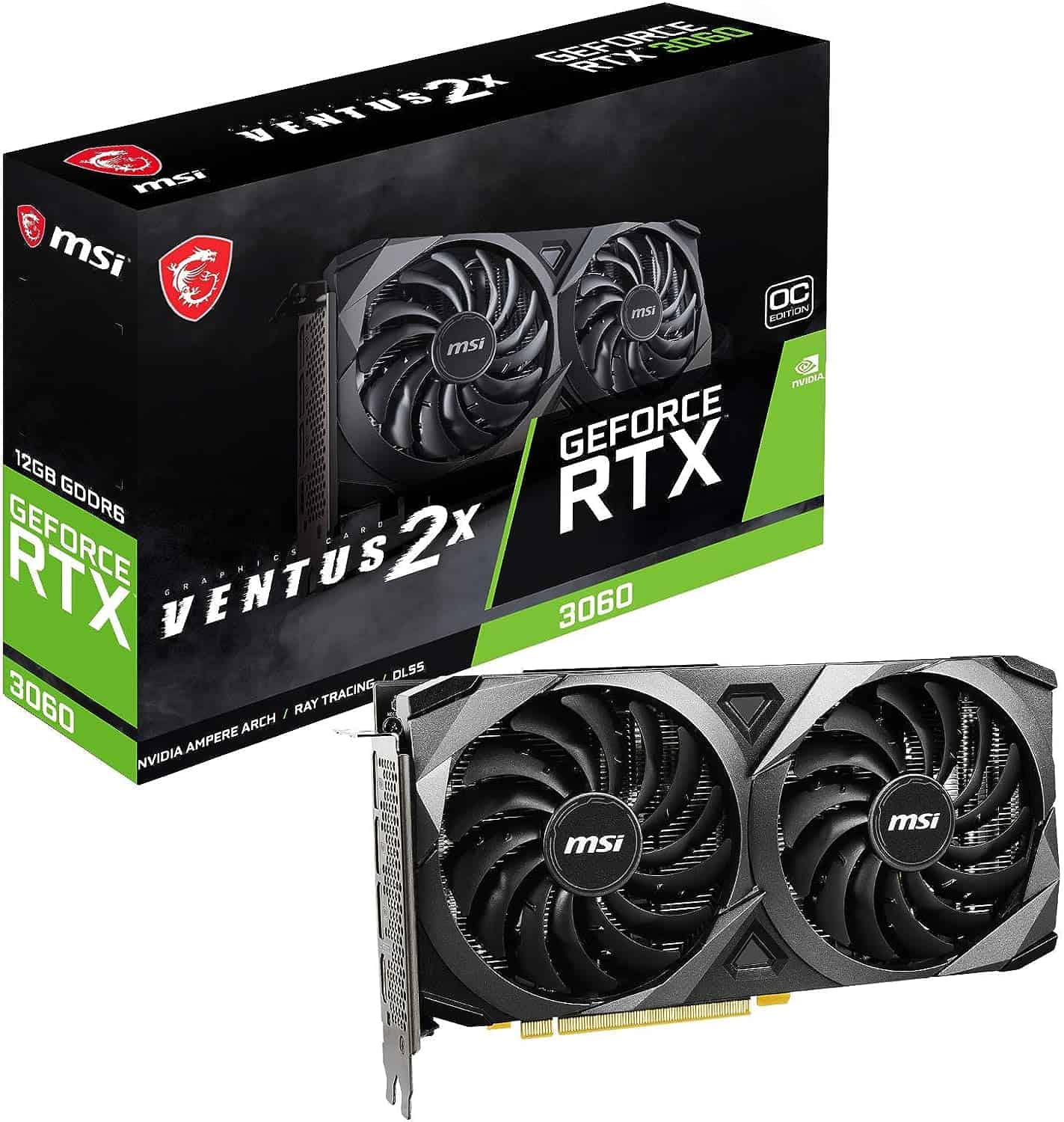Nvidia RTX 3050 6GB vs RTX 3060 – Close competition?

Table of Contents
Nvidia has recently announced the GeForce RTX 3050 6GB, available in stores from February 2, 2024. The mid-range graphics card is built on the 8 nm process, and based on the GA107 graphics processor (GA107-325-A1 variant). The card also supports DirectX 12 Ultimate, ensuring compatibility with modern games. PC enthusiasts have started wondering how close it will be to other Nvidia Geforce GPUs, particularly the RTX 3060. So, let’s delve into the Nvidia RTX 3050 6GB vs RTX 3060.
For similar articles, please see our comparison piece on the AMD Ryzen 3 8300G vs AMD Ryzen 5 5600G and Nvidia RTX 4070 Ti Super vs AMD RX 6900 XT. For now, let’s focus on these two models.
Nvidia RTX 3050 6GB vs Nvidia RTX 3060 – Specs
Now its time to look over the specifications, hardware, and components of these two models. The RTX 3050 6GB and the RTX 3060 feature the 8nm Ampere architecture, indicating efficiency and performance enhancements over previous generations. However, the RTX 3060 boasts a larger processor size with 12,000 million transistors than the RTX 3050’s 8,700 million. This difference suggests the RTX 3060 may have a slight processing power and efficiency edge.
| Specifications | Nvidia RTX 3050 (6GB) | Nvidia RTX 3060 |
|---|---|---|
| Architecture | Ampere | Ampere |
| Processor size | 8 nm | 8 nm |
| Transistors | 8,700 million | 12,000 million |
| Base clock speed | 1042 MHz | 1320 MHz |
| Max boost clock speed | 1470 MHz | 1777 MHz |
| Memory clock | 1750 MHz14 Gbps effective | 1875 MHz15 Gbps effective |
| Memory size | 6 GB | 12 GB |
| Memory bus | 96 bit | 192 bit |
| Cuda Cores | 8.6 | |
| Bandwidth | 168.0 GB/s | 360.0 GB/s |
| Shading units | 2304 | 3584 |
| Core/SM count | 18 | 28 |
| TDP (Watt) | 70 W | 170 W |
| L1 cache | 128 KB (per SM) | 128 KB (per SM) |
| L2 cache | 2 MB | 3 MB |
The Nvidia GeForce RTX 3060 also outperforms the RTX 3050 with higher base and boost clocks. The RTX 3060 operates at a base clock of 1320 MHz and a boost clock of 1777 MHz, while the RTX 3050 6GB lags with a base clock of 1042 MHz and a boost clock of 1470 MHz. These clock speed differentials directly impact the overall performance and responsiveness of the GPUs, especially during demanding gaming or rendering tasks.
The RTX 3060 doubles the memory size of the RTX 3050, offering 12GB of VRAM compared to the RTX 3050’s 6GB. Additionally, the RTX 3060 features a wider memory bus (192-bit) and higher memory clock speeds, resulting in significantly higher memory bandwidth (360.0 GB/s) compared to the RTX 3050’s more modest bandwidth (168.0 GB/s). These enhancements enable the RTX 3060 to easily handle larger textures and more complex scenes, making it a preferred choice for high-resolution gaming and content creation.
Furthermore, core counts (including cuda, ray tracing, and tensor cores) and shading units are crucial in determining GPU performance and rendering capabilities. The RTX 3060 boasts higher core and shading unit counts than the RTX 3050, providing superior rendering and graphical processing capabilities. With 3584 shading units and 28 cores per streaming multiprocessor (SM), the RTX 3060 can handle more complex shaders and lighting effects, resulting in smoother and more immersive gaming experiences on your device.
Despite these performance differentials, it’s essential to consider factors such as power consumption and pricing when evaluating GPU options. The RTX 3050 boasts a significantly lower thermal design power (TDP) of 70W compared to the RTX 3060’s 170W TDP, making it a more power-efficient choice for budget-conscious consumers. Additionally, the RTX 3050 comes with a lower price point of $179, making it an attractive option for gamers on a tight budget.
Nvidia RTX 3050 6GB vs Nvidia RTX 3060 – Performance
So, who has the better performance? The performance discrepancy between the Nvidia RTX 3050 6GB and the Nvidia RTX 3060 is considerable, stemming from differences in clock speeds, memory capacity, and core counts. The RTX 3060 boasts higher base and boost clocks, a larger memory size, and more shading units and cores per streaming multiprocessor (SM). These factors contribute to superior rendering capabilities, smoother gaming experiences, and better handling of demanding graphical tasks on the RTX 3060.
The difference in the specifications is also reflected in the benchmark scores and test results. Nvidia RTX 3050 6GB’s G3D Mark performance score is 10,550, and Nvidia RTX 3060’s G3D Mark performance score is 17,105. These benchmark results, overall, show a significant raw performance difference between the two.
Nvidia RTX 3050 6GB vs Nvidia RTX 3060 – Price and value
The Nvidia RTX 3050 6GB holds a significant advantage over the RTX 3060, with a lower launch price of $179 compared to the RTX 3060’s $329 price tag. While the RTX 3060 offers superior performance and features, the RTX 3050 6GB provides an affordable entry point for budget-conscious gamers seeking decent gaming performance without breaking the bank. The RTX 3050’s lower price and power-efficient design make it an attractive option for casual gamers or those prioritizing cost-effectiveness over top-tier performance.
Is the Nvidia RTX 3050 6GB good for gaming?
The RTX 3050 6GB is both a budget-friendly and entry-level gaming GPU. From this, we know that although gamers will get a good level of performance from it, other models may offer better experiences. For example, compared to the RTX 3060, the RTX 3050 is 43% slower in performance and has a massive difference in memory bandwidth, making the RTX 3060 a better choice for gaming. However, these are usually more expensive.
Final verdict
While both the Nvidia RTX 3050 6GB and the RTX 3060 offer compelling performance and value propositions, there are clear distinctions in specifications and capabilities that cater to different consumer needs and preferences. The RTX 3060’s higher performance, larger memory capacity, and wider memory bus make it ideal for gamers and content creators seeking top-tier performance and graphical fidelity. On the other hand, the RTX 3050’s lower price point and power-efficient design make it a viable option for budget-conscious gamers looking for solid 1080p gaming performance without breaking the bank.


